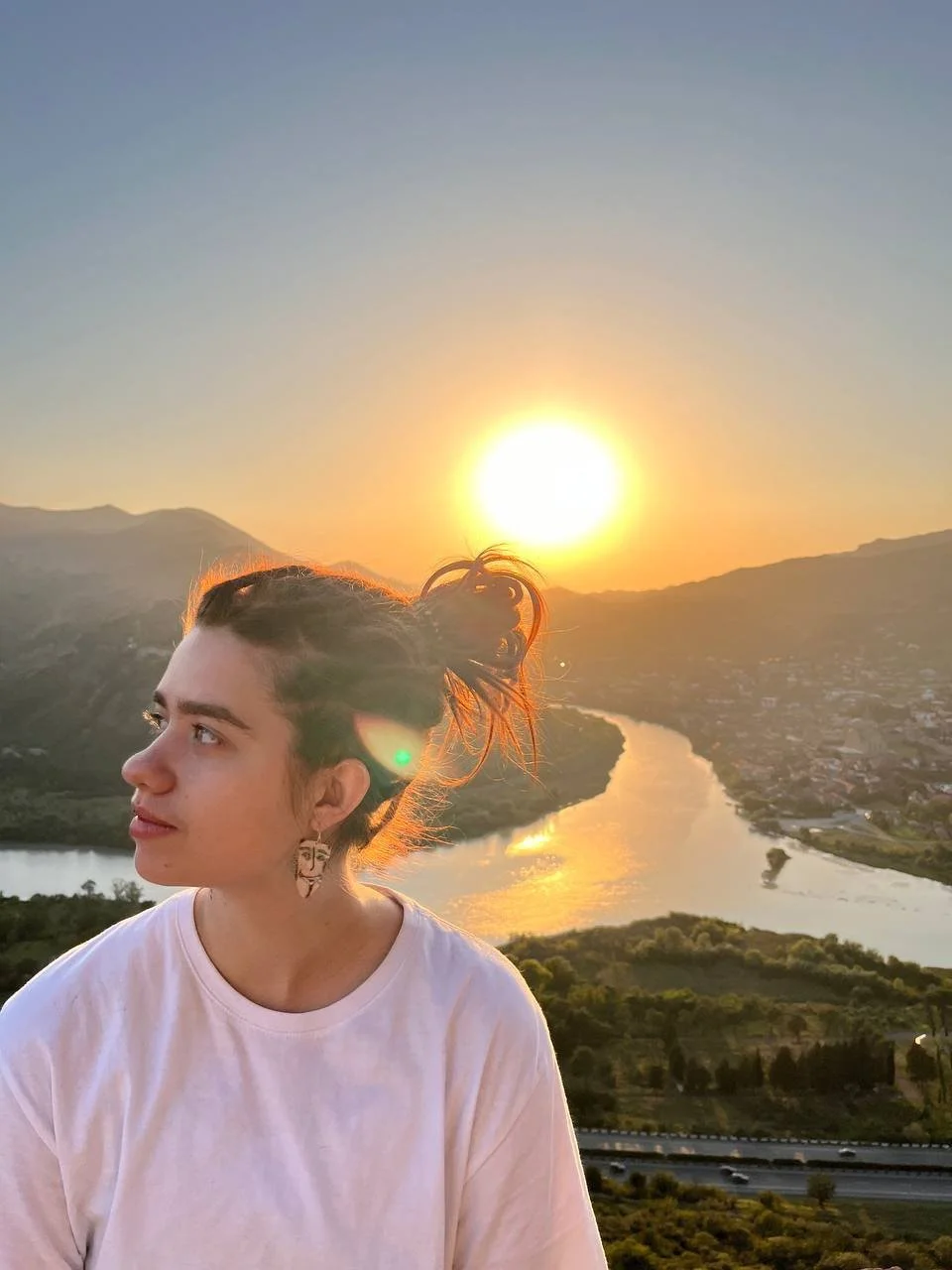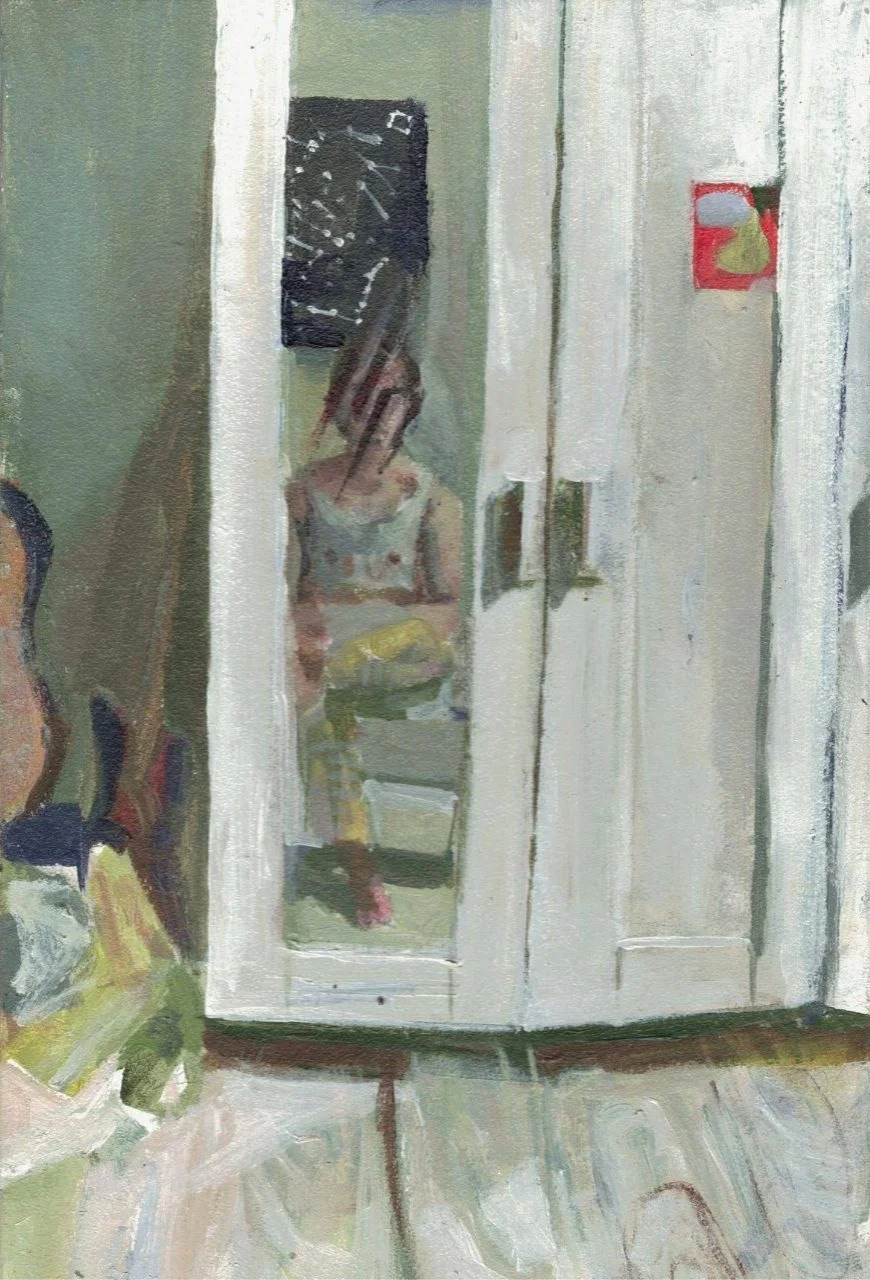10 Questions with Mark Vorobev - SA Sparrows
Mark Vorobev is a 20-year-old artist based in Saint Petersburg, Russia, currently a student of Stieglitz State Academy of Art and Design, Department of Artistic Metalworking. His experience includes participation in the exhibition-competition "Portrait" at the Stieglitz State Academy of Art and Design, exhibition under the direction of L.N. Dutov, dedicated to the Mikhailovka estate, Exhibition of the Stieglitz State Academy of Art and Design dedicated to the XVI International Drawing Competition and others.
Mark is a graphic artist, a comic artist, a painter, and a metal artist. He creates under the name SA Sparrows and thinks of his art as a form of therapy and a way to express feelings and states that cannot be talked about openly, such as gender dysphoria, body dysmorphia and depression.
Mark Vorobev - SA Sparrows - Portrait
INTERVIEW
First of all, can you tell us a bit about your journey as an artist? When did you first realise you wanted to be an artist?
I come from a family of non-artists, so there wasn’t much talk about me becoming a professional artist until I finished 9th grade in school. I was very confused because I couldn’t picture myself being a doctor or an engineer. When your child is constantly drawing and is not interested in anything else, there isn’t really anything to do as a parent apart from letting the kid do what they want to do. So my mom found out about a Stieglitz Academy collaboration with an ordinary school. They were looking for students interested in getting into the Academy. I applied, got accepted and finished my final two years of school under the Academy’s guidance. I aced my final exams and the entry exams, and I’ve been a student of the Academy since. I don’t think I would be happy if I were studying or doing anything else. Some people can be doctors and sketch on the side, but I don’t think a “normal” job is for me at all.
You work across several media, such as graphic art, comics, painting, and metalwork. How do you decide which medium to use for a particular idea?
Sometimes it is obvious to me. When I’m inspired, I picture the finished piece in my mind and choose the medium that allows me to come close to the image I envisioned. Basically, if what I want to do is a shaded piece with a lot ofgradients, I go for gouache paints because they allow me to achieve that particular look. If I don’t have the idea in my head, then I work from the medium. Megadeth’s bass player said once in an interview that “instruments sometimes have songs in them”, and I resonate with that. Picking up a new creative medium, or as much as a new pencil, can lead me to new ideas.
A room and a roof, Gouache, 6 pieces, 15x15 cm, 2024 © Mark Vorobev - SA Sparrows
What drew you to study Artistic Metalworking at the Stieglitz State Academy of Art and Design?
When I was 16 years old, I was just getting into school, and I didn’t know anything about the Academy. I didn’t know the faculty or the history. I got lucky that I blindly chose to prepare for the right art school. The thing I liked from the start was the approach to painting and drawing. Painting at the Academy is not a realistic replication of an object you see, but a decorative form of it. You are pushed to experiment and look at things differently. Art meets design. That approach is what sets the Academy apart from other Russian art schools.
How does your experience as a student at the Academy influence your personal artistic practice?
When I first got into the Academy, I told myself that I would quit if I didn’t have time to do my personal projects.Fortunately, I manage it, and my own work greatly benefits from my studies. The skills I perfected at the Academy are essential to any artist: composition, drawing, painting and art history. The more I learn, the more interesting my quirky pictures become. I can throw all my study work away because they don’t have any value to me, but what stays with me is the skill that I can put to good use.
You create under the name SA Sparrows. What does that name mean to you, and why did you choose it?
I wish this could be more interesting, but the name really is a rough translation of my last name (Vorobev means sparrow’s) plus the shortened version of my deadname, that’s when the SA part comes from. Some time ago, I realised that the abbreviation SA is used to describe a form of abuse, and it creeped me out at first, but then I found that oddly fitting to the themes of my work, so now I allow this, a darker interpretation of my name.
Kollontai Street, Acrylic, 30x40 cm, 2023 © Mark Vorobev - SA Sparrows
Samoyed, Acrylic, 60x40 cm, 2022 © Mark Vorobev - SA Sparrows
Do you have a particular creative routine or process that helps you focus and get into the right mindset when working?
My best time to create starts at about 6 pm. I don’t know why, but I am just better in the evening than I am during the day.Music is one of my main sources of inspiration. My art style sometimes changes depending on the music I like. I started doing pin-ups only after I got into industrial music and saw the covers of the bands like My Life With The Thrill Kill Kult and Revolting Cocks.
There is a special trick I use when I don’t have any inspiration for a long time. It is toxic and I don’t recommend anyone to do it, but I found that I can create some of my best work when I’m at my saddest. So yes, sometimes I think the worst thoughts and isolate myself from friends to become inspired. Thankfully, I very rarely do this. I think Freddy Mercury said that he intentionally ended his relationships before working on songs? So I guess some other artists do this as well.
Many of your works deal with themes like gender dysphoria, body dysmorphia, and depression, as you mention in your statement. How do you translate such deeply personal experiences into visual art?
I think that the key to this process is the fact that mental health has never been something that I could talk about openly. Nowadays, young people are very vocal about their struggles and things like depression and abuse are discussed between teens and young adults, but the parents of this generation (that frankly I belong to) are different. A generation that had to go through the end of the Soviet Union and the hungry and poor post-Soviet era, they are tough people who never had the time to reflect on their mental health because they had to work to survive. I didn’t really have many friends growing up, and my parents were not the people to talk about the gender dysphoria and anxiety I was experiencing, so I guess I started expressing the feelings through my art. Over the years, expressing my struggles this way has become the most natural thing for me.
How do you see the relationship between art and mental health, both personally and more broadly?
I think that art and mental health are intertwined. The artists decide how much of their struggles they want to express through the art and what they should bring to their therapists. I am sort of in awe of those artists who draw the line between what is personal and what can be shown to the public. I cannot do that yet, I think that is because I am too young.In the future, I hope to be more mature about the ways I cope with trauma and stress. For now, my art is the most comfortable way to “trauma dump”, as the modern slang goes.
Self criticism, Acrylic, 60x120 cm, 2024 © Mark Vorobev - SA Sparrows
Looking ahead, are there any new projects or themes you’re excited to explore in your work?
I am eager to become better as an artist and a person. I want to create projects that centre around inclusivity, bringing attention to the ways we can make everything more accessible to disabled people. I am starting to work on a big project about the hard-of-hearing people, which I hope will get some funding. I want to do good.
Lastly, what advice would you give to other young artists who are just beginning to find their voice?
The best advice is the simplest: create every day. Draw every day. It does not have to be good, just practice. Your voice is going to find you. I didn’t think I had a specific style until people started sending random illustrations to me and saying that it looked like I had done it. Do what you love and be loud about it.
Artist’s Talk
Al-Tiba9 Interviews is a promotional platform for artists to articulate their vision and engage them with our diverse readership through a published art dialogue. The artists are interviewed by Mohamed Benhadj, the founder & curator of Al-Tiba9, to highlight their artistic careers and introduce them to the international contemporary art scene across our vast network of museums, galleries, art professionals, art dealers, collectors, and art lovers across the globe.




















